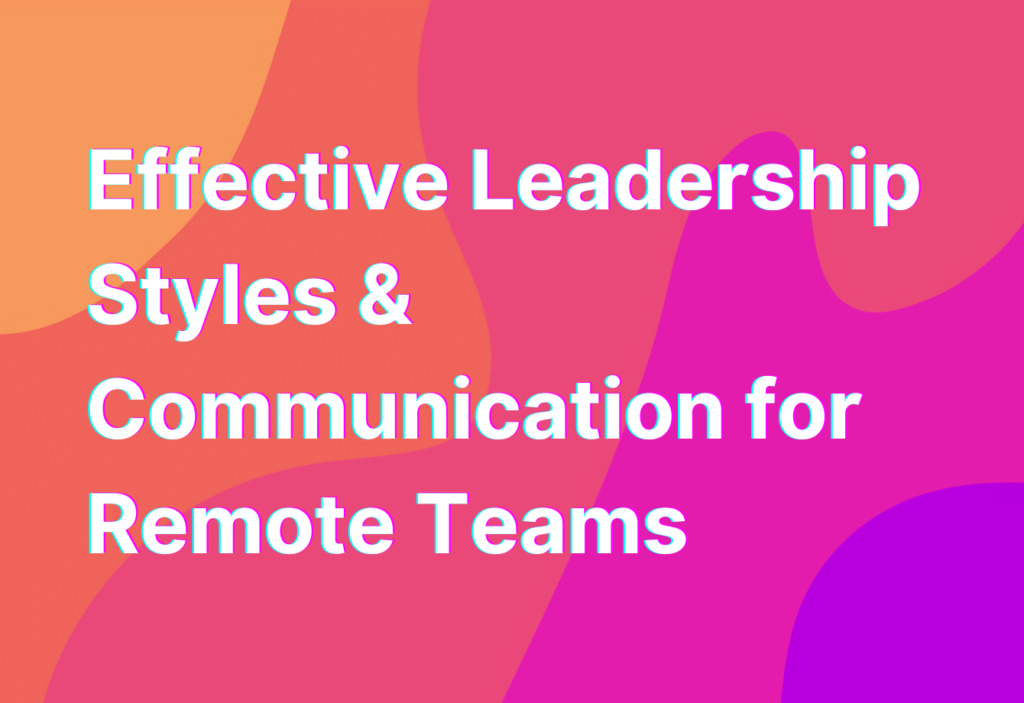Effective Leadership Styles & Communication for Remote Teams
Hey there, remote work enthusiasts! It’s Ashley here, your friendly remote work advocate with 10 years of experience in the tech industry. Today, I want to talk about effective leadership styles and communication for remote teams. As we all know, remote work has become increasingly popular, and with that comes the need for leaders who can effectively manage and communicate with their teams from a distance. So, let’s dive in and explore some key leadership styles and communication strategies that can help remote teams thrive!
1. Transformational Leadership
One leadership style that works particularly well in remote settings is transformational leadership. This style focuses on inspiring and motivating team members to achieve their full potential. Transformational leaders are known for their ability to create a positive and supportive work environment, which is crucial when team members are physically separated.
By setting clear goals, providing regular feedback, and offering support and guidance, transformational leaders can help remote teams stay engaged and motivated. This leadership style encourages open communication and collaboration, which are essential for remote teams to succeed.
2. Servant Leadership
Another effective leadership style for remote teams is servant leadership. This style emphasizes the leader’s role as a servant to their team, prioritizing their needs and well-being. Servant leaders focus on building strong relationships with their team members and supporting them in their personal and professional growth.
In a remote work environment, where face-to-face interactions are limited, servant leadership can help foster a sense of trust and connection. By actively listening to their team members, providing resources and support, and empowering them to make decisions, servant leaders can create a positive and inclusive remote work culture.
3. Situational Leadership
Situational leadership is a flexible leadership style that adapts to the needs of individual team members and the situation at hand. This style recognizes that different team members may require different levels of guidance and support, depending on their skills, experience, and confidence.
In a remote team, where team members may have varying levels of experience with remote work, situational leadership can be particularly effective. Leaders can assess the readiness and development level of each team member and adjust their leadership approach accordingly. This ensures that team members receive the support they need to succeed in their remote roles.
4. Transparent Communication
Effective communication is the backbone of any successful remote team. Without face-to-face interactions, it’s crucial for leaders to establish clear and transparent communication channels. This includes setting expectations for communication frequency and methods, as well as providing regular updates and feedback.
Transparent communication also means being open and honest with your team members. If there are challenges or changes in the remote work environment, it’s important to communicate them openly and address any concerns or questions. This helps build trust and fosters a culture of transparency within the team.
5. Embracing Technology
Remote teams rely heavily on technology to collaborate and communicate effectively. As a leader, it’s important to embrace and leverage the right tools and platforms to support your team’s remote work. Whether it’s project management software like Trello, communication tools like Slack, or video conferencing platforms like Zoom, using the right technology can streamline workflows and enhance team collaboration.
By staying up to date with the latest remote work tools and trends, leaders can ensure that their teams have the resources they need to work efficiently and effectively from anywhere.
Wrapping Up
Effective leadership styles and communication are essential for remote teams to thrive. Transformational leadership, servant leadership, and situational leadership are all effective styles that can help remote teams stay engaged and motivated. Transparent communication and embracing technology are also key factors in creating a successful remote work environment.
If you want to learn more about effective meeting agendas and communication strategies for remote teams, check out this Meeting agenda article on our website. It’s packed with valuable tips and insights to help you run productive remote meetings!
That’s all for now, remote work warriors. Keep leading with style and communicating with finesse, and your remote team will thrive. Until next time!


